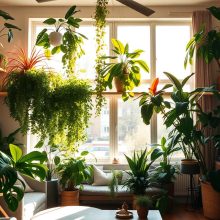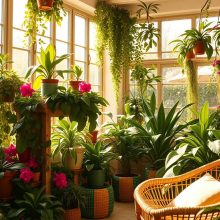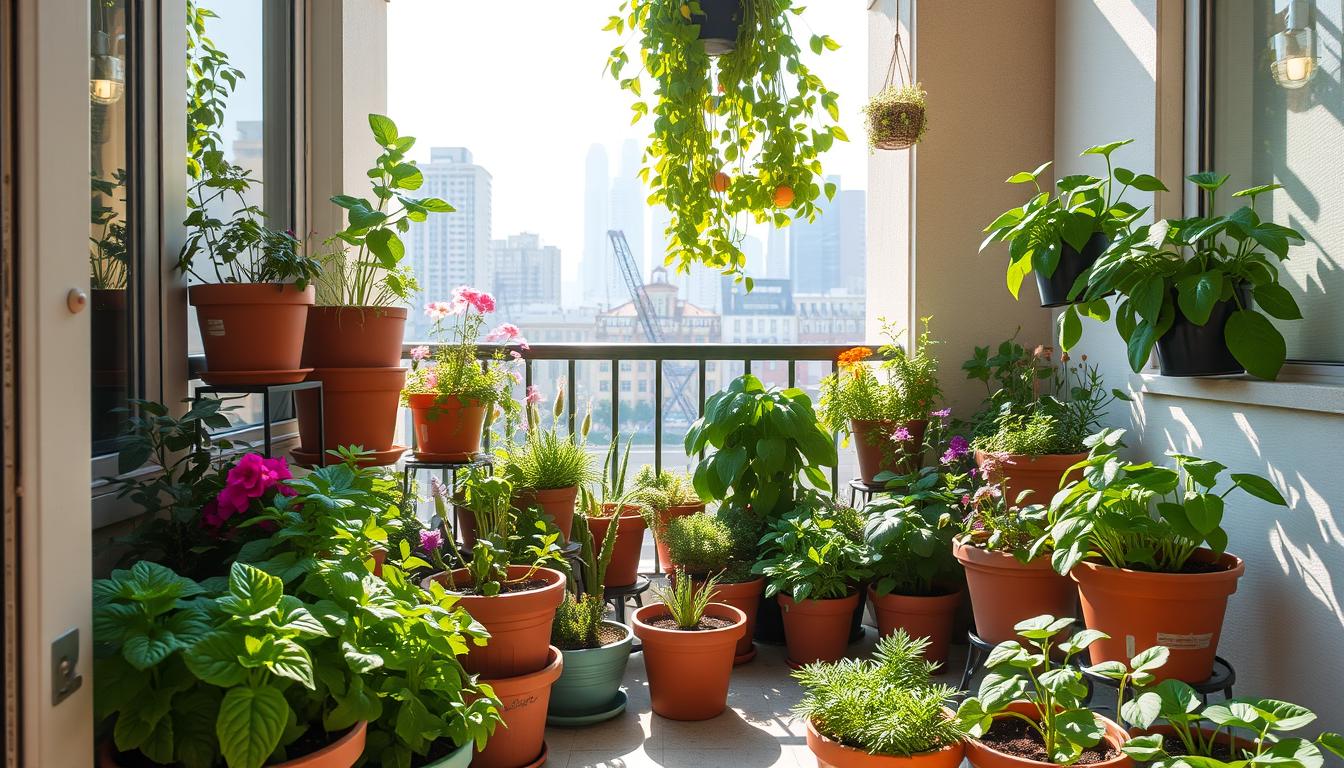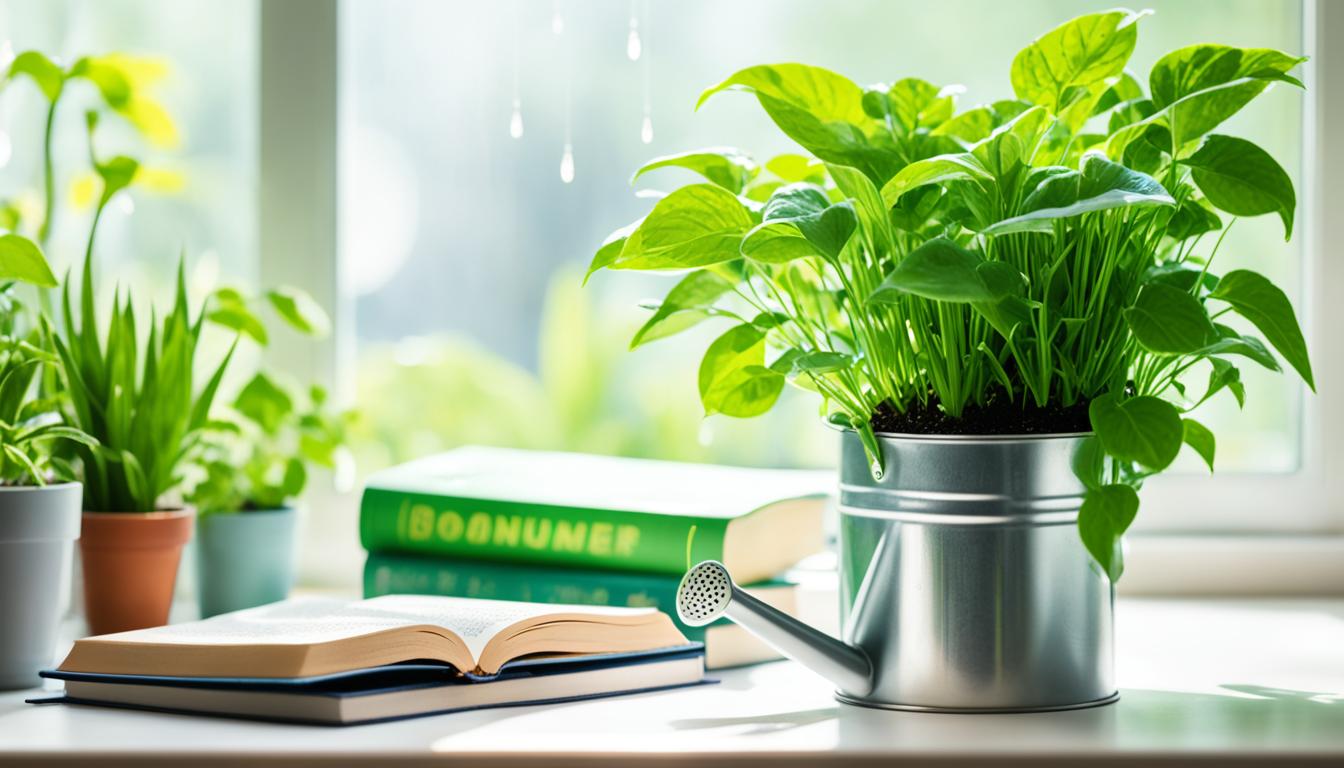Small Space Gardening: Cultivate a Lush Oasis in Tight Spots
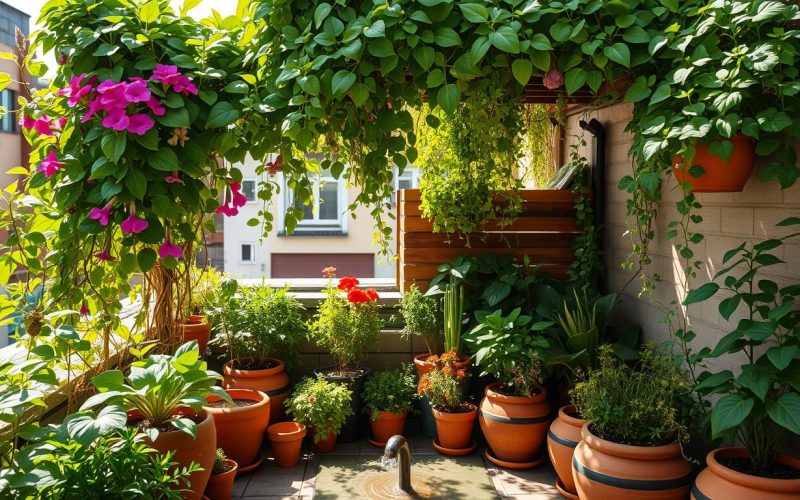
Urban dwellers are finding a new way to garden in small spaces. They turn tiny areas into lush green spots. This change has made it possible for city folks to grow beautiful gardens, even in small places.
It’s not just about making spaces look good. Small space gardening is also practical for city living. People use vertical gardens and creative containers to make the most of every inch. Whether you’re new to gardening or have experience, you can grow a thriving garden in small urban areas.
Key Takeaways
- Small space gardening transforms urban living spaces
- Vertical gardening maximizes limited areas
- Anyone can create a garden in compact spaces
- Urban gardening provides fresh produce and mental health benefits
- Creative techniques make gardening accessible to everyone
Why Small Space Gardening is Worth It
Urban gardening turns small areas into lively green spots. It’s not just a trend. It’s a way to connect with nature, make your home better, and feel better too.
Benefits of Gardening in Small Areas
Planting in small spaces has big benefits. Urban gardening does more than just grow plants:
- Reduces stress levels by up to 30%
- Improves mental health and emotional balance
- Creates a personal sanctuary within limited spaces
- Allows fresh, homegrown produce without large land requirements
Environmental Impact of Urban Gardening
Small gardens help the environment a lot. They support local ecosystems, cut down on carbon emissions, and boost urban biodiversity.
- Increases local green spaces
- Supports pollinator populations
- Reduces urban heat island effect
- Improves air quality in residential areas
Enhancing Your Living Space
Urban gardening makes any space special. You can turn balconies, windowsills, or small backyards into lush, productive areas.
It also saves money. Growing your own food can cut grocery bills by up to 30%. You get fresh, organic food right at home.
Choosing the Right Location for Your Garden
Starting a small space garden means picking the best spot. Urban gardeners have special challenges, but smart planning can turn any small area into a green oasis. To succeed, you need to think about a few important things.
Evaluating Light Conditions
Sunlight is key for any garden. In cities, knowing your garden’s light is vital. Most plants need at least 6 hours of direct sun each day. Watch your garden spot during the day:
- Track sunlight patterns for a full day
- Identify areas with consistent sun exposure
- Note any shade from buildings or trees
Considering Accessibility
Vertical gardening is great for small spaces. Pick a spot that’s easy to reach for watering, pruning, and picking. Being close to water and your home makes care easier.
Utilizing Vertical Space
When space is tight, think up! Vertical gardening lets you grow more in less space. Here are ways to use your garden’s height:
- Wall-mounted planters
- Hanging baskets
- Tiered shelving systems
- Trellises and climbing plant supports
By choosing the right spot and using vertical gardening, you can make a green, productive garden in tiny urban areas.
Selecting the Best Plants for Small Spaces
Container gardening and small space gardening have changed how city folks grow plants. Plant breeders have made compact varieties that do well in small spaces. This makes it easy to have a lively garden, even in tiny areas.
Choosing the right plants is key for a successful small space garden. Not all plants are good for containers. Look for varieties that stay small and grow well in tight spots.
Ideal Herbs for Small Gardens
Herbs are great for container gardening because they’re versatile and small. Here are some top herbs to consider:
- Basil – Compact and prolific
- Thyme – Grows well in small containers
- Rosemary – Tolerates tight spaces
- Mint – Can be contained to prevent spreading
Compact Vegetable Varieties
Small space gardening doesn’t mean you can’t grow veggies. Many veggies are made for container gardening:
- Dwarf tomatoes
- Bush beans
- Mini cucumbers
- Patio pepper plants
Flowering Plants to Maximize Blooms
Add color and life to your small garden with these compact flowering plants. They do well in containers:
- Dwarf hydrangeas
- Miniature roses
- Compact lavender
- Dwarf marigolds
By picking plants made for small spaces, gardeners can turn even the smallest areas into green oases. The trick is knowing what each plant needs and matching it to your space and light.
Creative Container Gardening Ideas
Container gardening turns small spaces into lively green spots. It’s a smart way for city folks and garden lovers to grow plants in tight spots. You can use it on tiny balconies, windowsills, or small patios to grow herbs, veggies, and pretty plants.
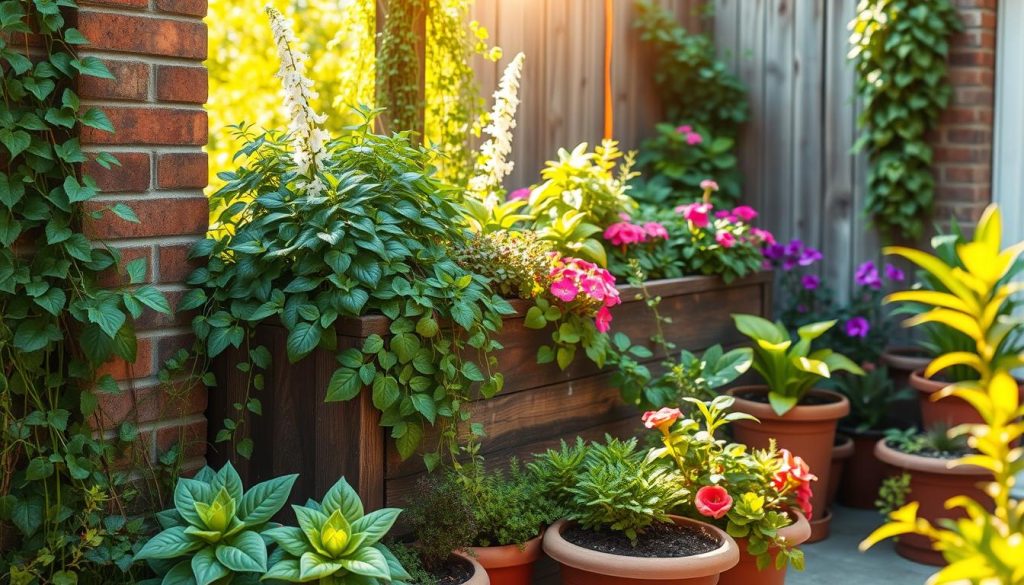
Choosing the right containers is key for a successful garden. Each plant needs a special container to do well in small spaces.
Types of Containers for Different Plants
- Terra cotta pots: Perfect for herbs and succulents
- Plastic containers: Lightweight and affordable
- Wooden planters: Ideal for vegetables and larger plants
- Hanging baskets: Great for trailing plants and flowers
- Recycled containers: Eco-friendly option for creative gardeners
DIY Container Projects
Turn everyday items into unique planters for your garden. Old wooden crates, tin buckets, and even shoes can become cute plant homes with some creativity and prep.
Multi-Purpose Containers
Make the most of your gardening by picking containers that do more. Look for ones with built-in storage, self-watering, or designs that add to your space while housing your plants.
Container gardening is perfect for city gardeners wanting green spots in tight areas. With the right containers and a dash of creativity, anyone can grow a lush garden in the smallest of places.
Vertical Gardening Techniques
Vertical gardening turns small spaces into lush green oases. It’s a smart way for city folks and those with tiny yards to grow more. By growing plants up, you can make your garden look great and work well.
To succeed in vertical gardening, use every inch of space. There are many creative ways to grow plants upwards instead of outwards.
Wall-Mounted Planters: Maximizing Vertical Space
- Install pocket planters on exterior or interior walls
- Use lightweight materials like fabric or plastic
- Select plants with shallow root systems
- Ensure proper drainage and water management
Hanging Gardens and Baskets
Hanging gardens are perfect for small spaces. They add beauty and save floor space. Try using macramé hangers, metal brackets, or hanging systems to hang your plants.
Shelving for Plant Stacking
- Choose sturdy shelving units with multiple levels
- Select shelves with good light exposure
- Mix different plant types for visual diversity
- Use grow lights for areas with limited natural sunlight
Vertical gardening opens up new ways for city gardeners to create green spaces. With these smart methods, even a small area can become a lush garden.
Companion Planting for Small Gardens
Urban gardening turns small spaces into lively green spots. Companion planting is key for making the most of these areas. It helps gardeners use every inch of their garden.
Companion planting is a clever way to group plants. It boosts growth, keeps pests away, and makes the most of small spaces. By knowing how plants work together, gardeners can grow stronger and more productive gardens.
Maximizing Space with Smart Plant Partnerships
In small urban gardens, companion planting is essential. It helps use space wisely. Here are some great pairings:
- Tomatoes with basil: Improves flavor and repels insects
- Carrots alongside onions: Reduces pest problems
- Beans near corn: Provides natural support and nitrogen
Successful Plant Combinations
Choosing the right plant pairs can greatly improve garden health. Some plants protect each other from pests and share nutrients. They also create microclimates that help plants grow better in tight spaces.
Understanding Growth Interactions
Companion planting is more than just where you put plants. Some plants release chemicals that help or hinder others. This natural interaction can greatly benefit small gardens, leading to amazing results.
Maintenance Tips for Small Space Gardens
Keeping a small garden healthy needs careful care and attention. In small spaces, gardening requires precision to keep your garden thriving. Whether you grow herbs on a balcony or veggies in pots, knowing how to maintain is key.
Efficient Watering Techniques
Watering is crucial in small gardens. Containers dry out quickly, more so in summer. Here are some tips:
- Use self-watering containers to keep soil moist
- Install drip irrigation for precise watering
- Water in the morning or evening to cut down on evaporation
- Check soil moisture every day in urban gardens
Understanding Soil Health
Soil health is vital for a successful garden. In small spaces, it’s even more important. Refresh your soil often, choose good potting mixes, and add compost to keep nutrients up.
Pest Control in Limited Areas
Pests can quickly take over small gardens. Use these pest control methods:
- Check your plants often for pests
- Use natural predators like ladybugs
- Apply organic pest control
- Keep your plants diverse to avoid pest problems
With the right care and maintenance, your small garden can flourish. It will become a lively, productive space that adds joy and fresh food to your home.
Seasonal Gardening Strategies
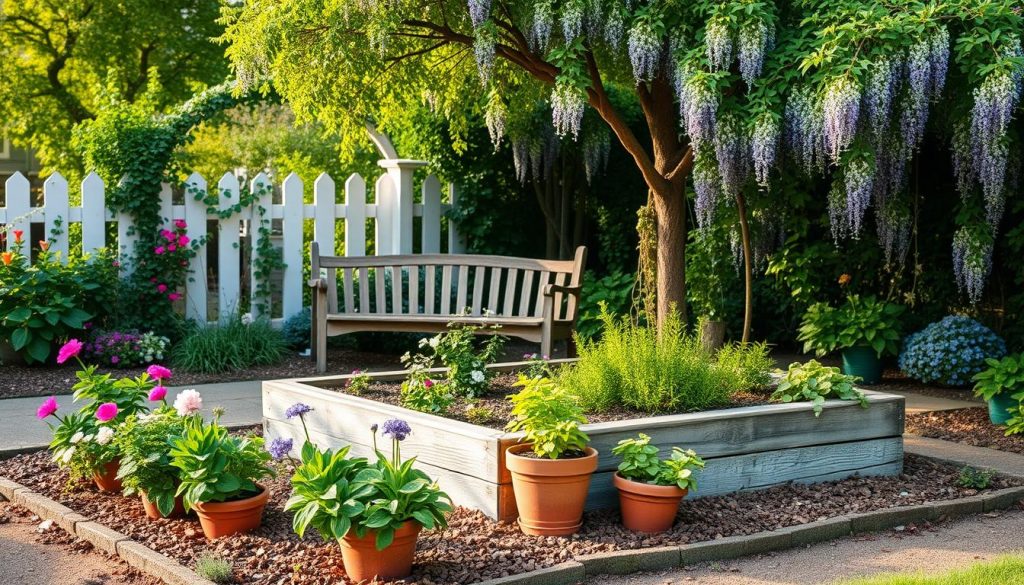
Gardening in small spaces needs careful planning all year. Knowing how seasons affect plants is key. This way, you can make the most of your space and grow food all year.
Planning for Spring and Summer Planting
Spring and summer are the best times for gardening in small areas. Choose plants that love warm weather:
- Tomatoes in compact varieties
- Herbs like basil and mint
- Peppers and compact cucumber plants
- Leafy greens that tolerate heat
Preparing for Fall and Winter Gardens
Even in cold weather, your garden can still thrive. Pick plants that do well in the cold and use protective methods:
- Plant kale, spinach, and winter radishes
- Use cold frames to extend growing season
- Protect container gardens with insulating materials
- Start indoor herb gardens near sunny windows
Crop Rotation in Compact Gardens
Crop rotation is vital, even in small gardens. It keeps the soil healthy and pests away. By changing what you grow each season, you keep your garden productive.
Urban Gardening Innovations
Urban gardening is changing how city folks grow food and make green spaces. New tech and creative ideas are making small space gardening fun and easy for city people.
The world of urban gardening is growing fast with new tech. These tools make gardening in small spaces easier and more efficient. They’re breaking down old barriers to gardening in tight spots.
Hydroponics and Aeroponics: Growing Without Soil
New growing systems are changing urban gardening. Hydroponics and aeroponics let you grow plants without soil. This is great for small spaces.
- Hydroponic systems use nutrient-rich water instead of soil
- Aeroponic techniques suspend plant roots in misted environments
- Both methods require minimal space and maximize plant growth
Smart Gardening Technologies
Technology is making urban gardening smarter. It helps with plant care, making it easier and more precise.
- Automated watering systems
- Plant monitoring sensors
- Mobile apps for garden management
Community Gardening Initiatives
Community gardens are changing cities with shared green spaces. They let people grow food, meet neighbors, and make cities greener.
- Shared garden plots in public spaces
- Rooftop community gardens
- Neighborhood growing programs
Urban gardening is always pushing limits. It shows that even in small spaces, you can create lively, productive green areas in cities.
Inspiring Small Space Gardening Success Stories
Small space landscaping has changed urban gardening in the United States. People with little space are showing that creativity and growth are possible. They turn even the smallest areas into green oases.
In San Francisco, Sarah Martinez made her 50-square-foot balcony a garden. She uses vertical plants and small containers to grow a lot. Her story shows how smart design and passion can make a big difference.
Successful gardeners in small spaces share their secrets. They choose plants that grow well in little space and use herbs that do many things. They also know how to use the right containers and vertical gardening to make the most of their space.
Every small garden story teaches us something new about growing food in the city. These tales encourage city folks to see their homes as places to grow food. They show that with hard work and the right methods, anyone can have a green and productive garden, no matter the size.
